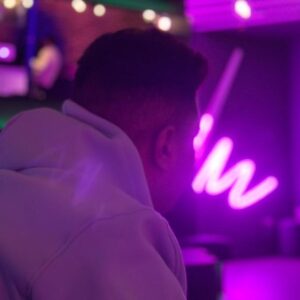A basin waste, also known as a sink waste, is a crucial component of any bathroom or kitchen sink. It serves the essential function of draining wastewater from the basin into the plumbing system. Basin wastes come in various types and styles, each with its unique features and applications. Understanding the different types of basin wastes and their installation processes is essential for homeowners and DIY enthusiasts seeking to maintain or upgrade their plumbing fixtures.
Types of Basin Wastes
Basin wastes can be categorized into two main types: slotted and unslotted.
-
Slotted basin wastes: These wastes feature slots or openings along the sides that allow water to flow through even when the basin’s plug is closed. This design prevents overflow and is commonly found in basins with an overflow hole.
-
Unslotted basin wastes: These wastes lack slots and are typically used in basins without an overflow hole. They rely solely on the basin’s plug to prevent overflow.
Step-by-Step Guide to Fitting a Basin Waste
Fitting a basin waste is a relatively straightforward process that can be accomplished with basic tools and DIY skills. Here’s a step-by-step guide to help you through the process:
1. Remove the Existing Basin Waste
- Place a bucket under the basin to catch any dripping water.
- Use a screwdriver or pliers to loosen and remove the nut and washer from the underside of the basin.
- Carefully detach the basin waste from the basin and the waste pipe.
2. Clean and Dry the Basin and Waste Pipe
- Wipe away any debris or old sealant from the basin’s waste hole and the waste pipe.
- Allow the surfaces to dry completely before proceeding.
3. Apply Silicone Sealant
- Apply a bead of silicone sealant around the basin’s waste hole, ensuring it fills any gaps between the basin and the waste pipe.
4. Attach the Basin Waste
- Insert the basin waste into the basin’s waste hole, ensuring the slots align with the overflow hole.
- Tighten the nut and washer securely from the underside of the basin.
5. Connect the Waste Pipe
- Attach the waste pipe to the basin waste using the provided fitting.
6. Test for Leaks
- Fill the basin with water and check for any leaks around the basin waste and the waste pipe.
Additional Tips and Advice
- Choose the Right Waste: Select the appropriate basin waste type for your basin and plumbing system. Consult a professional if unsure.
- Use Proper Tools: Employ the correct tools, such as a screwdriver, pliers, and a bucket, to ensure a smooth installation process.
- Handle with Care: Be gentle when handling the basin waste and its components to avoid damaging them.
- Work in a Well-Lit Area: Ensure adequate lighting to clearly see the components and work area.
What do I need for a basin waste?
For a basin waste installation, you primarily need a waste fitting, which is generally included with the basin upon purchase. Other essential items include a basin waste trap to prevent bad odours, a wrench for tightening, and plumber’s tape to ensure a proper seal. You would also need pipe cutters if your plumbing needs adjustment.
How to install a basin waste?
To install a basin waste, start by unscrewing the locknut and removing the washer and connector from the assembly. Next, apply a layer of plumber’s putty to the basin’s drainage hole and place the waste into it. Screw back the locknut, tighten it firmly, and attach the connector and washer. Finally, ensure it is correctly installed and there are no leaks.
How to install a basin waste?
To install a basin waste, first remove the old waste if necessary. Ensure the basin hole is clean, then insert the new waste, tightening it by hand. Use silicone sealant around the waste for a waterproof seal. Finally, connect it to the drainage system, making sure it’s securely fastened to prevent leaks.
What tool do you use to tighten a sink waste?
A plumber’s wrench or channel lock pliers are typically used to tighten a sink waste. The adjustable size of these tools makes them perfect for clinging to the large nuts holding the sink waste. They provide the necessary leverage to tighten the assembly effectively, ensuring a secure and leak-free fit.
Conclusion
Basin wastes play a vital role in maintaining bathroom and kitchen plumbing systems. Understanding the different types, installation procedures, and troubleshooting techniques is essential for homeowners and DIY enthusiasts seeking to maintain or upgrade their plumbing fixtures. This guide provides a comprehensive overview of basin wastes, empowering you to make informed decisions and tackle plumbing tasks with confidence.


